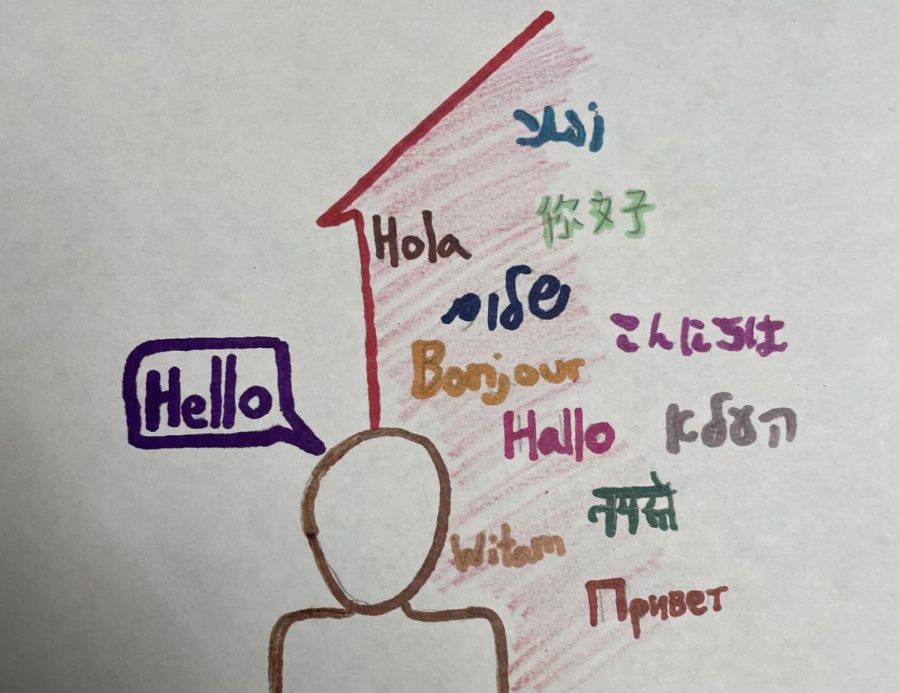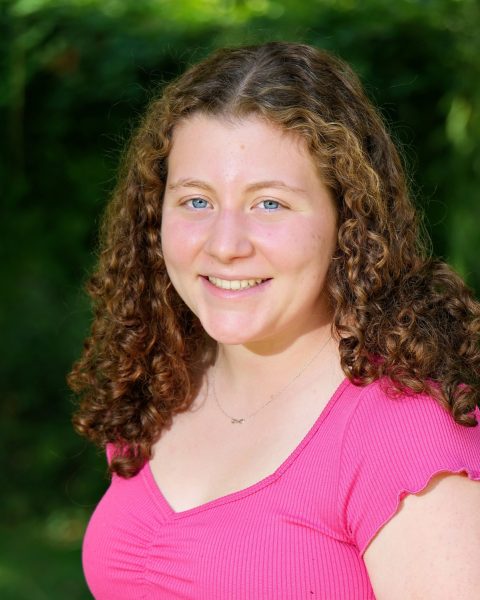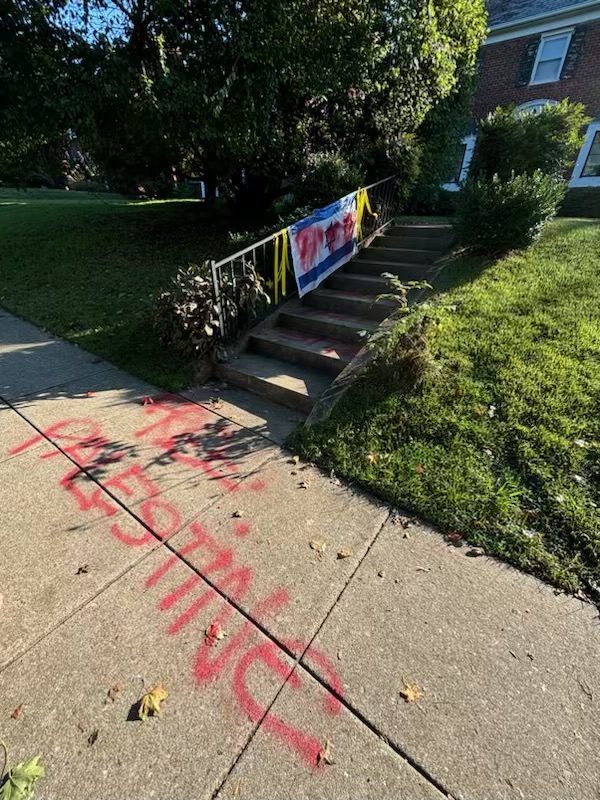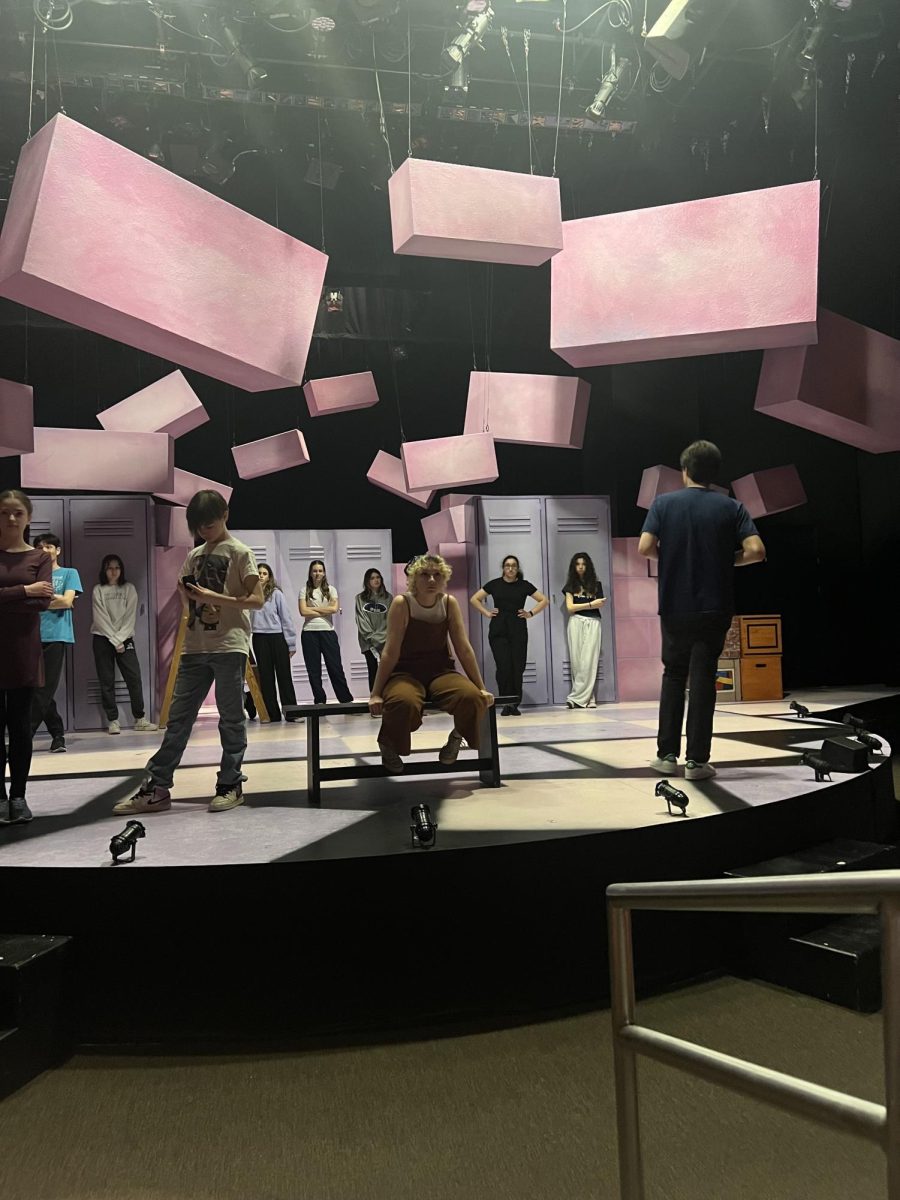For the love of languages: JDS’ bounty of bilingual students
January 5, 2023
In the hallways of CESJDS, students can be found conversing with their peers in English in every corner. Meanwhile, junior Reut Skromne stands by her locker on the phone with her dad, speaking with him in Spanish. Just outside, freshman David Mizrahi is pulling up to school, engaged in a Farsi conversation with his parents in the car.
According to the U.S. Census, approximately 21% of families in the United States speak a language other than English at home. In Montgomery County, the percentage is almost double. At JDS alone, among the 862 students in the Lower and Upper Schools, there are eight languages other than English spoken among the different families, including Portuguese, American Sign Language and Russian.
Mizrahi speaks Farsi at home. Farsi isn’t a language taught at JDS, so Mizrahi never had the opportunity to study it formally in school. He did, however, participate in a two-week Arabic course and studied Spanish throughout middle school.
Despite not being able to speak Farsi at school, Mizrahi is very appreciative for the level of connection his knowledge of Farsi enables him to have with his family and their culture.
“My parents and my whole family are from Iran and moved to America right before I was born, so growing up [speaking Farsi] was the only way I could communicate with them,” Mizrahi said. “I learned a bunch of traditions in Persian culture and Iran’s culture, [and] I learned all of this by my parents and grandparents telling me stories and teaching me in Farsi.”
A study from NIH in 2013 determined that multilingual children, even toddlers and babies, have certain intellectual advantages. When multilingual children are regularly switching between languages, they are able to both strengthen and train their brains much earlier than monolingual children.
Skromne’s dad is from Mexico, so she grew up learning to speak both Spanish and English. She speaks Spanish at home primarily with her father and youngest brother, though her other brothers and mother are fluent as well.
In her freshman year, Skromne took the highest level Spanish class she was able to take. Her class was a sophomore level class and Skromne was the only freshman. She stopped taking Spanish after one year.
“The curriculum isn’t designed for native Spanish speakers, so I found it to be a little easy and then I stopped taking it,” Skromne said.
World Languages Department Chair and Middle School Diversity Equity Inclusion and Justice Coordinator Silvia Kurlat Ares said that she received several requests from families for a Spanish heritage learners class. As a result, JDS added a heritage learners class to the course catalog for the 2022-2023 school year, however, no students enrolled.
Despite this, Kurlat Ares thinks that heritage learners classes can be very beneficial.
“You can be a speaker of the language and communicate well, [but] that doesn’t mean that you can write it or understand the grammar or that you really understand the culture,” Kurlat Ares said. “Classes for heritage speakers means [classes for] a person that has the language because of their cultural heritage but needs to learn how to write it and then to learn the culture.”
Kurlat Ares, Skromne and Mizrahi all feel that knowing another language is an important part of their identities and adds richness to their lives.
“It is an amazing gift to grow up bilingual in any possible way,” Kurlat Ares said. “It makes your life richer, it opens more doors to you, it gives you a better understanding of the world. The most important thing is that you get connected to family and who you are [through it], and there’s something really amazing about having that connection.”









